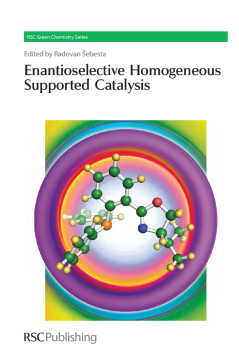
Additional Information
Book Details
Abstract
Immobilization of chiral catalysts is an important tool for improving overall efficiency of catalytic processes. However, heterogeneous catalysts often suffer from decreased activities and supported but still homogeneous catalysts can help overcome this issue. This book covers the most important concepts of homogeneous supported catalysis with an emphasis on enantioselective processes. It describes the state-of-the-art and latest developments in each area whilst critically evaluating the strengths and weaknesses of this important method. The book encompasses ionically-tagged catalysts, supported organocatalysts, supported ionic liquid phases, catalysis using soluble polymers, catalytic dendrimers, fluorous catalysts, water soluble catalysts and non-covalent immobilization methods. Potential developments and ideas for the future are also highlighted. There is a growing demand for effective and recyclable catalysts so this book, covering all the important methods in the field of supported homogeneous catalysis, will appeal to many researchers in academia and industry.
Radovan èebesta, born in 1975, studied chemistry at Faculty of Natural Sciences, Comenius University Bratislava, where he received his Ph.D. in organic chemistry in 2002. He carried out his postdoctoral research with Prof. Dieter Seebach at ETH Zurich working on synthesis of ?-amino acids and peptides. Then he worked with Prof. Ben L. Feringa at Groningen University on asymmetric catalysis using phosphoramidites. In 2005 he joined group of Prof. ètefan Toma at Comenius University as an assistant professor. After defending his habilitation in 2008 he is now associated professor. His research interests include development of new asymmetric catalytic methods using ferrocene catalysts as well as organocatalysts. These are combined with application of green chemistry approaches like catalysts immobilizations, non-classical solvents and energy sources.
